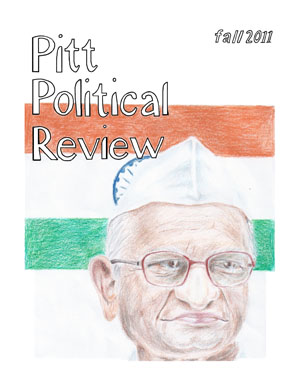The Fourth Branch of Government: How Direct Democracy is Altering the Structure of State Governments
DOI:
https://doi.org/10.5195/ppr.2011.10Abstract
This paper aims to explore how direct democracy (i.e. the initiative and referendum) affect the balance of power in state governments. Traditionally, like the federal government, state governments consist of three branches: executive, legislative, and judicial. Due to a complex system of checks and balances, one branch cannot become too powerful, adhering to an anti-monarchy sentiment of the founders of the United States. In this set-up, the legislative branch is responsible for creating policy, the executive branch is responsible for implementing it, and the judicial branch is responsible for interpreting it. My thesis is that direct democracy, by allowing the populous to directly implement policy without bearing the responsibility for their actions as politicians do, undermines the legislative branch and therefore representative democracy itself, leading to irresponsible legislation that is not subject to the scrutiny of the United States political process.
Downloads
Additional Files
Published
Issue
Section
License
Authors who publish with this journal agree to the following terms:
- The Author retains copyright in the Work, where the term “Work” shall include all digital objects that may result in subsequent electronic publication or distribution.
- Upon acceptance of the Work, the author shall grant to the Publisher the right of first publication of the Work.
- The Author shall grant to the Publisher and its agents the nonexclusive perpetual right and license to publish, archive, and make accessible the Work in whole or in part in all forms of media now or hereafter known under a Creative Commons 3.0 License (Attribution-Noncommercial-No Derivative Works), or its equivalent, which, for the avoidance of doubt, allows others to copy, distribute, and transmit the Work under the following conditions:
- Attribution—other users must attribute the Work in the manner specified by the author as indicated on the journal Web site;
- Noncommercial—other users (including Publisher) may not use this Work for commercial purposes;
- No Derivative Works—other users (including Publisher) may not alter, transform, or build upon this Work,with the understanding that any of the above conditions can be waived with permission from the Author and that where the Work or any of its elements is in the public domain under applicable law, that status is in no way affected by the license.
- The Author is able to enter into separate, additional contractual arrangements for the nonexclusive distribution of the journal's published version of the Work (e.g., post it to an institutional repository or publish it in a book), as long as there is provided in the document an acknowledgement of its initial publication in this journal.
- Authors are permitted and encouraged to post online a pre-publication manuscript (but not the Publisher’s final formatted PDF version of the Work) in institutional repositories or on their Websites prior to and during the submission process, as it can lead to productive exchanges, as well as earlier and greater citation of published work (see The Effect of Open Access). Any such posting made before acceptance and publication of the Work shall be updated upon publication to include a reference to the Publisher-assigned DOI (Digital Object Identifier) and a link to the online abstract for the final published Work in the Journal.
- Upon Publisher’s request, the Author agrees to furnish promptly to Publisher, at the Author’s own expense, written evidence of the permissions, licenses, and consents for use of third-party material included within the Work, except as determined by Publisher to be covered by the principles of Fair Use.
- The Author represents and warrants that:
- the Work is the Author’s original work;
- the Author has not transferred, and will not transfer, exclusive rights in the Work to any third party;
- the Work is not pending review or under consideration by another publisher;
- the Work has not previously been published;
- the Work contains no misrepresentation or infringement of the Work or property of other authors or third parties; and
- the Work contains no libel, invasion of privacy, or other unlawful matter.
- The Author agrees to indemnify and hold Publisher harmless from Author’s breach of the representations and warranties contained in Paragraph 6 above, as well as any claim or proceeding relating to Publisher’s use and publication of any content contained in the Work, including third-party content.


